What’s Up?
I realized this week that I lost one of the two sets of my keys for my Toyota Sequoia so I decided to drive over to Vero Beach to the dealer. Purchase two keys… Simple matter, no? Actually not. It took more than 3 1/2 hours, and at that, they were only able to make me one key… But I had my laptop so I answered e-mails and worked on blog posts. My planned late afternoon swim was cancelled by thunderstorms…
I was thrilled to learn yesterday of the sale of Hisham Atallah’s 600 II for the full asking price of $9499 just a day after it was listed. Another gem of a 600 II is listed below.
Gear Questions and Advice
Too many folks attending BAA IPTs and dozens of the folks whom I see in the field, and on BPN, are–out of ignorance–using the wrong gear, especially when it comes to tripods and more especially, tripod heads… Please know that I am always glad to answer your gear questions via e-mail.
The Interview Now on YouTube
The interview by Peggy Farren of Understand Photography can be seen and heard on YouTube. And, the sound is now synched perfectly. If you missed it (or not), you can access it here.
The Streak: 314!
Today’s blog post marks a totally insane, irrational, illogical, preposterous, absurd, completely ridiculous, unfathomable, silly, incomprehensible, what’s wrong with this guy?, makes-no-sense, 314 days in a row with a new educational blog post. There should be no end in sight until my big South America trip next fall. Or not… As always-–and folks have been doing a really great job recently–-please remember to use our B&H links for your major gear purchases. For best results use one of our many product-specific links; after clicking on one of those you can continue shopping with all subsequent purchases invisibly tracked to BAA. Your doing so is always greatly appreciated. Please remember: web orders only. And please remember also that if you are shopping for items that we carry in the new BAA Online Store (as noted in red at the close of this post below) we would appreciate your business.
Canon 600mm f/4L IS II USM Lens
Another Weapon of Mass Destruction!
IPT veteran Mark Overgaard is offering a Canon EF600 f/4L IS II USM lens in excellent plus condition for $9,495. The sale includes a LensCoat, the rear lens cap, the front lens cover, the lens trunk, the monopod mount, and both the lens and lens trunk straps, the lens manual and warranty card–the latter included for record-keeping purposes only since the warranty is expired, and insured ground shipping via either FEDEX or UPS to US addresses only.
The lens just underwent an 11-point clean and check service from Canon Professional Services.
The lens will not ship until your check clears unless other arrangements are made. Please contact Mark via e-mail.
As y’all know, the 600 II has been my go-to long lens since its introduction several years ago. It is relatively lightweight and super-sharp. It goes great with the 1.4X III TC and with a bit of practice and good sharpness techniques, you should be able to make sharp images with the 2X III TC down to 1/60 sec. As a new one goes for $11,499 you can save a nice $2005 by grabbing Mark’s lens right now. artie
birds as art: The Avian Photography of Arthur Morris/The Top 100
|
birds as art: The Avian Photography of Arthur Morris/The Top 100
My latest e-book, created on a wing and a prayer in less than two weeks–see Harebrained Scheme here–includes the 67 spectacular images that hung last winter and spring in the Ordover Gallery at the San Diego Natural History Museum in a career-retrospective solo exhibition. In addition, there are 33 additional images in the spectacular e-book that barely missed making the show.
This exhibition companion e-book makes it possible for everyone to “visit” TheNAT gallery and, in addition, to enjoy seeing my top one hundred bird photographs under one roof. Each image includes a title, the species name, the location, relevant EXIF data, and an anecdotal caption. The short story: the collection is inspirational.
birds as art: The Avian Photography of Arthur Morris/The Top 100: $23 for the professionally produced CD (includes shipping to US addresses only)
Please click here to purchase the physical CD. As above, your purchase price includes shipping to all US addresses. If you would like your CD signed on the inside cover with a black Sharpie, you will need to place your order by phone and request a signed copy: 863-692-0906. For our Canadian friends we are offering the CD for $28 with shipping to Canada via phone orders only: 863-692-0906.
Those who purchase the CD are advised to copy the file to their computers and then archive the CD.
|
The new e-book via is also available via convenient download for $20 by clicking here. |
birds as art: The Avian Photography of Arthur Morris/The Top 100: $20 via convenient download.
Overseas folks, and anyone else as well, can purchase the e-book via convenient download for $20 by clicking here.
Kindly Note
Please share this e-book only with your spouse or significant other. If a friend asks you to share a copy with them, please direct them either to this blog post or to the appropriate link in the BAA Online Store as above. All of the images and text are protected by international copyright law and may not be copied or printed without written permission from the photographer/author. Many thanks for honoring these requests.
You will–of course–need Adobe Acrobat Reader to view the PDF.
|
This image was created by multiple IPT veteran Jim Robellard with the hand held Sigma 150-600mm f/5-6.3 DG OS HSM Sports lens for Canon EF (at 600mm) and the Canon EOS-1D X Mark II. ISO 1000: 1/1250 sec. at f/9. Roseate Spoonbill with wings raised.
|
Southwest Florida Free Site Guide Update (or should we call it a Downerdate?)
As most of you know, Ding Darling has gone downhill over the past decade in large due to anti-photographer management attitude and policies. Though I have not been in years, I hear that on occasion it can still be worth a visit at times at different seasons. Be clear though, that it is no longer close to being the crown jewel of the National Wildlife Refuge System that it was in the 1990s and a bit beyond.
Little Estero Lagoon on Fort Myers Beach has also hit the skids as the lagoon has pretty much dried up after being cut off from the Gulf. Least Terns and Black Skimmers nest on the beach most years about 3/4 mile east of the Wyndham Garden Hotel (formerly the Holiday Inn).
The Venice Rookery ain’t what it used to be, but neither am I; both are still pretty good. And lastly, my understanding is that Corkscrew has been poor forever most likely due to small ecological changes related to the water levels. And to the fact that the Wood Storks have been moving north for more than a decade.
There are however, still lots of tame birds in Southwest Florida and lots of great places to photograph them. Pretty much all of them are covered in detail in the Southwest Florida Site Guide.
|
For this image Jim used the hand held Sigma 150-600mm f/5-6.3 DG OS HSM Sports lens for Canon EF (at 470mm) and the Canon EOS 7D Mark II ISO 800: 1/400 sec. at f/6.3 @ 1/400. Roseate Spoonbill dipping bill before preening.
|
Southwest Florida Roseate Spoonbill Site Guide Update
Multiple IPT veteran Jim Robellard and all-around nice guy, who kindly supplied the images for today’s blog post, recently alerted me of a new hotspot with spoonbills and skimmers and an assortment of wading birds and shorebirds. The birds are coming to a fairly large but surely temporary rain pool. We are not sure how long it will last. But it is quite active right now.
Folks who have previously purchased the Southwest Florida Site Guide (and those who purchase it now) who would like to learn about this location must contact us via email. You must click on the preceding link and you must cut and paste either the first page of the site guide or your order confirmation e-mail. E-mails from folks who do not include proof of purchase will be deleted.
|
This image was created by multiple IPT veteran Jim Robellard with the hand held Sigma 150-600mm f/5-6.3 DG OS HSM Sports lens for Canon EF (at 600mm) and the Canon EOS-1D X Mark II. ISO 640: 1/1250 sec. at f/9. Roseate Spoonbill foraging.
|
Your Favorite?
Which of Jim Robellard’s fine spoonbill images is your favorite? Please let us know why you made your choice.
More on the Sigma 150-600 Zoom Lenses…
After seeing Jim’s images I learned that the Sigma 150-600 is not only available as a Nikon-mount version (the Sigma 150-600mm f/5-6.3 DG OS HSM Sports Lens for Nikon F) but that they make a lighter inexpensive version in each mount for folks on a budget ( the Sigma 150-600mm f/5-6.3 DG OS HSM Contemporary Lens for Canon EF and the Sigma 150-600mm f/5-6.3 DG OS HSM Contemporary Lens for Nikon F.) And the lighter weight Contemporary versions are just as sharp as the Sport versions. What times these are: you can get a sharp, lightweight hand holdable zoom lens that gives you 600mm of reach for under $1000. Amazing.
Please Remember to use my Affiliate Links and to Visit the New BAA Online Store 🙂
To show your appreciation for my continuing efforts here, we ask, as always, that you get in the habit of using my B&H affiliate links on the right side of the blog for all of your photo and electronics purchases. Please check the availability of all photographic accessories in the New BIRDS AS ART Online Store, especially the Mongoose M3.6 tripod head, Wimberley lens plates, Delkin flash cards and accessories, and LensCoat stuff.
As always, we sell only what I have used, have tested, and can depend on. We will not sell you junk. We know what you need to make creating great images easy and fun. And we are always glad to answer your gear questions via e-mail.
I would of course appreciate your using our B&H affiliate links for all of your major gear, video, and electronic purchases. For the photographic stuff mentioned in the paragraph above we, and for everything else in the new store, we, meaning BAA, would of course greatly appreciate your business. Here is a huge thank you to the many who have been using our links on a regular basis and those who will be visiting the New BIRDS AS ART Online Store as well.
Be sure to like and follow BAA on Facebook by clicking on the logo link upper right. Tanks a stack!
Typos
In all blog posts and Bulletins, feel free to e-mail or to leave a comment regarding any typos or errors. Just be right 🙂

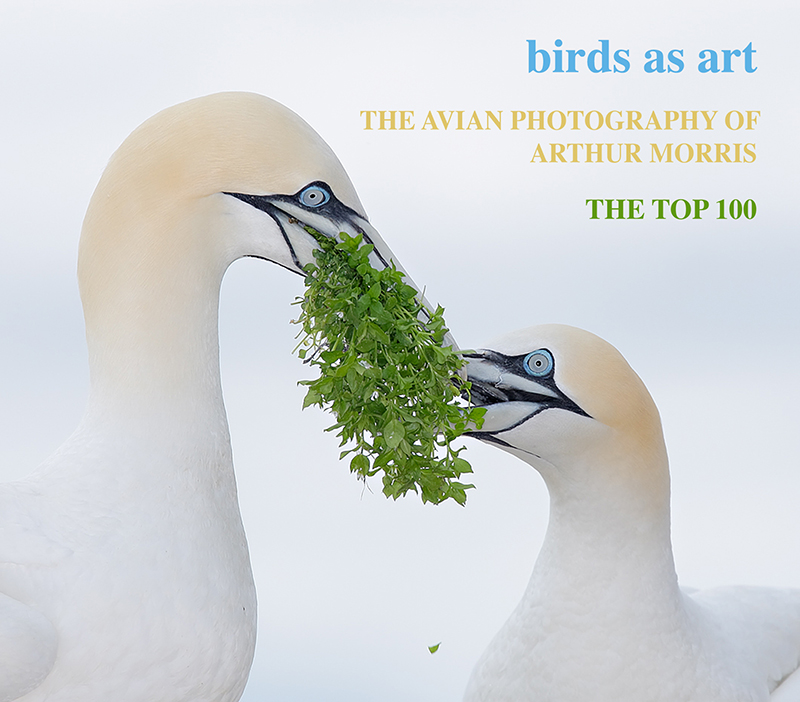
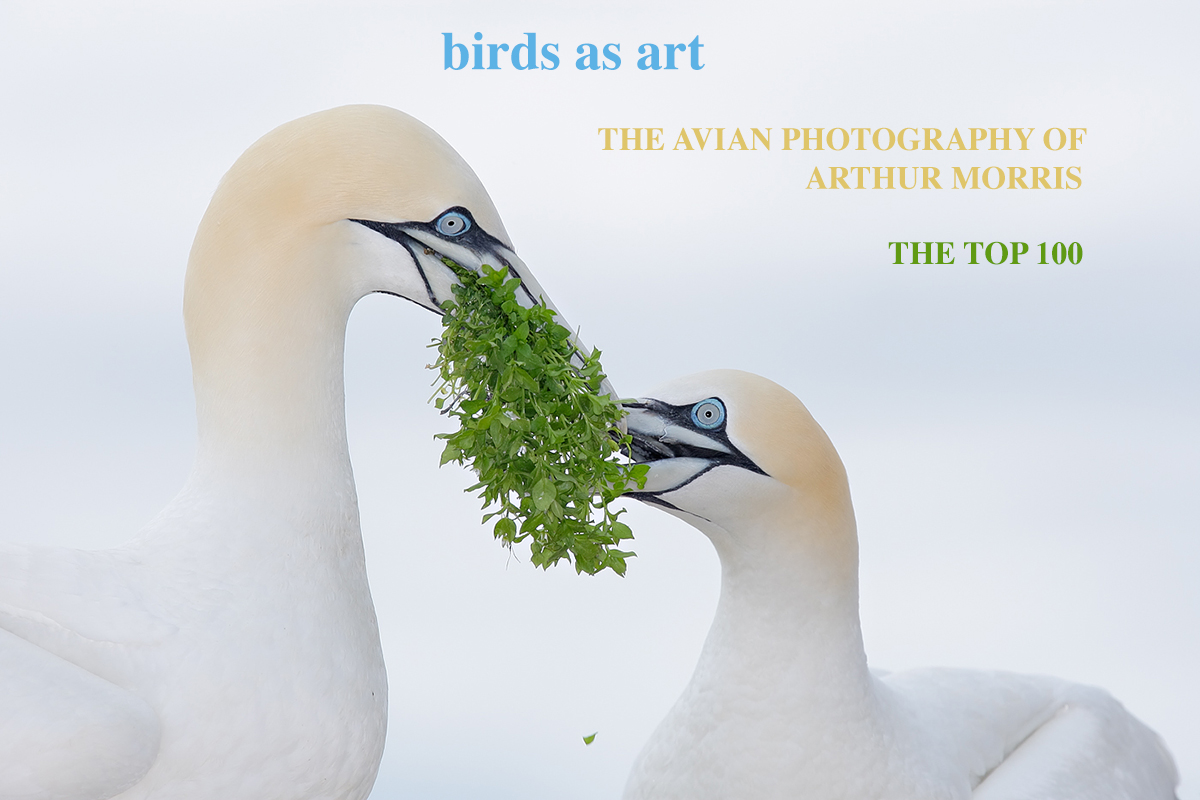
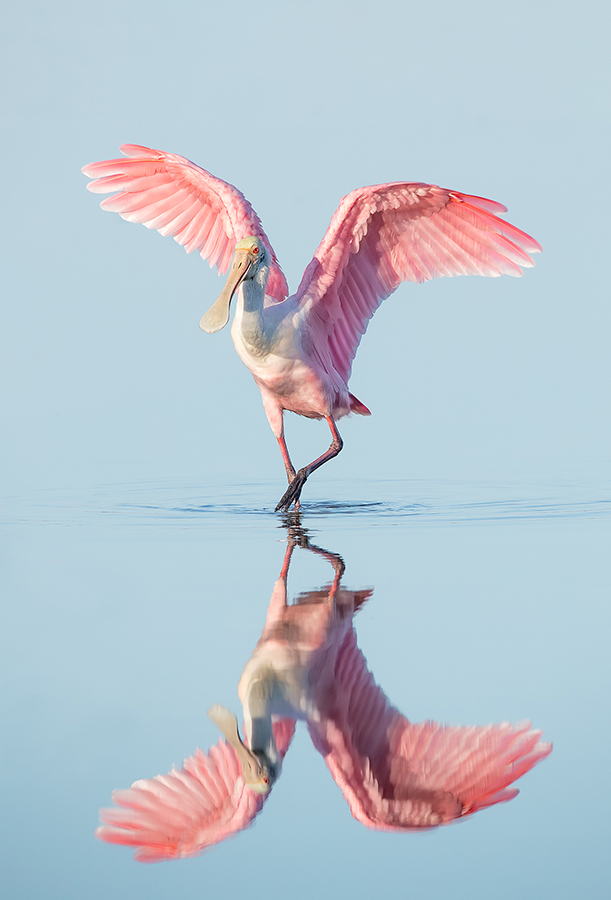
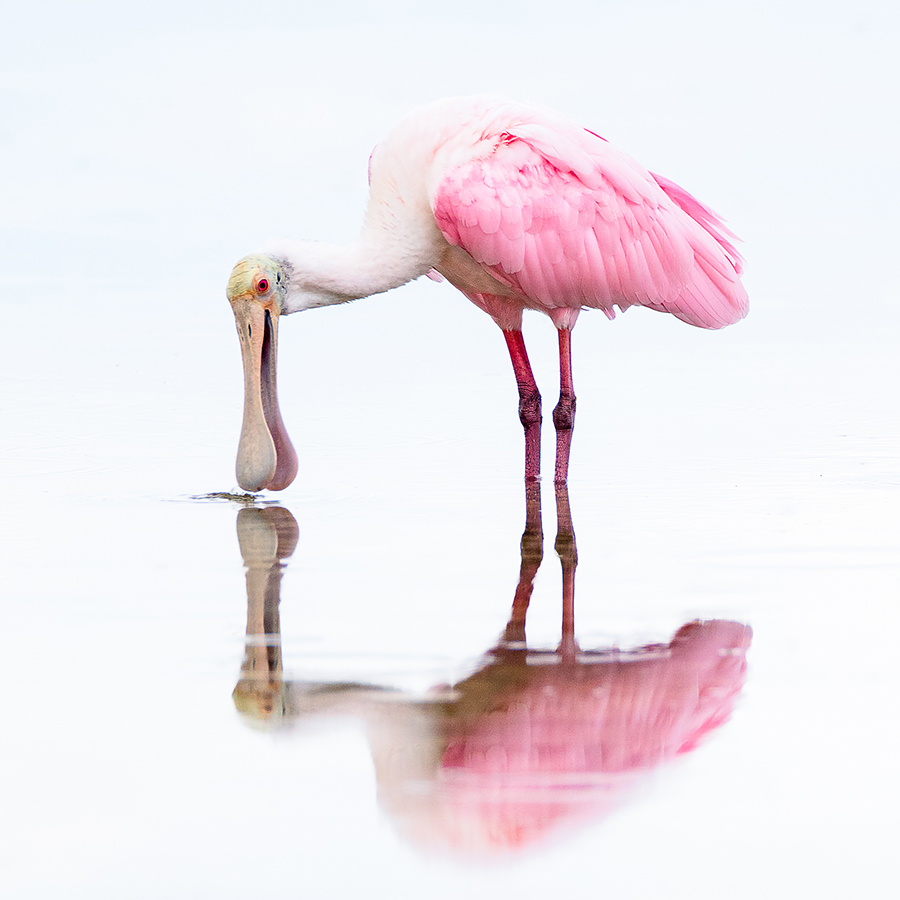
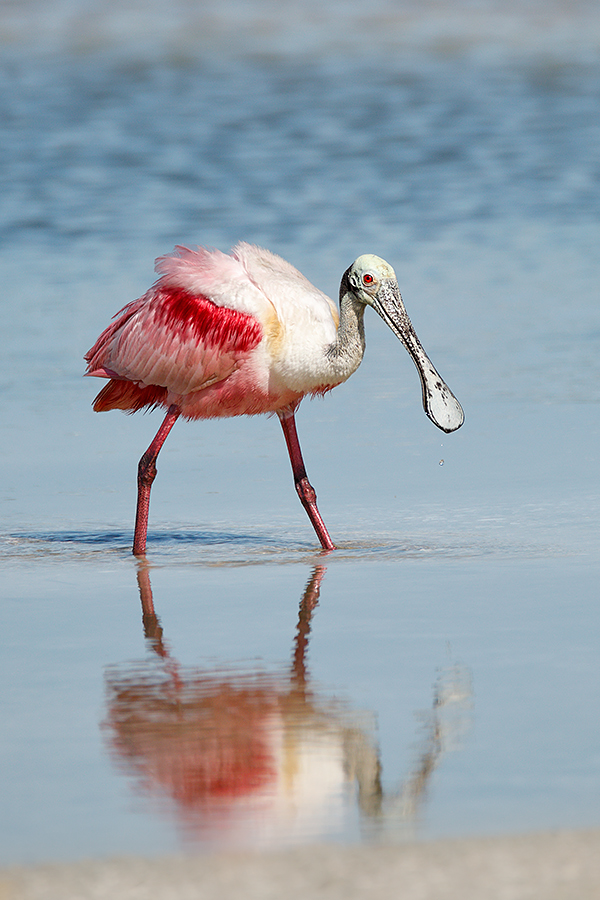













RE The Avian Photography of Arthur Morris/The Top 100
I was fortunate to purchase the first download of this wonderful exhibit: a fascinating display and a ton of education in the shooting notes with each image.
Especially spectacular is #6 in the series “Fire in Mist” with the shooting notes:
Snow geese in ground fog backlit by the rising sun. Bosque del Apache NWR, San Antonio, NM.
Canon 600mm f/4L lens with the EOS-1N body. Fuji Velvia pushed one stop to ISO 100: 1/320
sec. at f/5.6.
Two takeaways for me: Amazing skill to make that image in the age of film and technology of the day.
The other: how much I see in my minds eye as a result of the retaining the exquisite detail in his later higher resolution digital images.
Thanks for your kind words sir. As for Fire in the Mist, I wish that it had been in the age of digital; I missed a series of images that would have been ten times better than the one you see when I was changing film for the fourth time in five minutes…
later and love, artie
Hi, Artie. Wonderful images all three. I think #1 is my favorite for the wonderful pose, reflection, and color. Then #2, in part because I’ve never seen a spoonbill’s mouth open before but also for composition, pose, and color. Then #3, which I’d be most proud of if it were mine.
Would you use the Sigma 150-600 over the Canon 100-400 II?
Not me but…
a
David
As Artie has preached here many times, the Canon 100-400 II is an outstanding lens and the benefit of a close focus range that makes it almost like a macro…very versatile. Is it sharper than the Sigma..probably and it is certainly lighter having shot warblers all morning handheld,but the Sigma goes to 600mm so if you don’t have a 600mm prime, the Sigma does pretty good. I do think it needs to be paired with a better body like the 1Dx Mkii or the new 5D Mkiv for two reasons; all the focus points are active, especially if you put the teleconvertor on and the higher iso performance, as the Sigma is only f5.6-6.3. My keepers have improved markedly with the 1Dx Mkii over the 7D Mkii where I hate to go over iso 800. Every lens has a purpose. I do like the ability to recompose with the zoom telephoto. Lastly, the lens needs to be micro adjusted as Artie preaches. It’s imperative with a cheaper lens. I have also been using Piccure+ on the bird only layer, not the background. It uses some sort of deconvolution sharpening algorithm whatever that means. It does make a difference but requires some serious computing horsepower and a really upscale graphics card to do the math. Thanks for your kind comments on the pics. Jim
Thanks Jim and thanks again for the photos. Lens aligning can be just as vital with the $10K lenses especially with TCs…
later and love, a
All 3 images are great and I love the fact that you’ve shared some images taken with a more consumer priced 3rd party lens.
For me, #2 is the best image here. I am curious as to why the square crop, but I really enjoy the softness of the light matching the hues of pink. It’s soft, pretty and peaceful. And how often do you get to see a spoonbill open?
Thanks for the update. I first went to Ding Darling in the early 80’s. It was a great place to photograph at that time. I remember a small picnic area just outside the refuge that had an osprey nest on a telephone pole in the middle of the area. Was a nice place to eat a snack while photographing the osprey flying in with fish. When I visited three years ago the picnic area and the osprey nest where both gone. Traffic has also gotten terrible on the island. It took nearly four hours to go from Blind Pass to the Sanibel Causeway. There are other areas that are far more productive.
I like the first two images because of the clean backgrounds and the behavior.
Hi Artie,
Good morning. Thank you for the info about Ding Darling National Wildlife Refuge.
As for the images, I like all the three images. I like the first one more due to the clean reflection and wing position.
Thanks
Krishna
Hi Artie,
Do a search for Tile, a Bluetooth locator that you put on things like a keychain, with a companion app to point you to them. It may just save you some time and money down the road!
Regarding the images, the first image took my breath away with its color, balance, and simplicity. Capturing the subtle ripple in calm waters without too much distortion in the reflection is a shot I would love to have time and time again.
Best,
Scott
Thanks Scott but what’s an APP?
later and love, artie
An application that can be downloaded to a smartphone or tablet (Apple or Android).
Coincidentally enough, this photographer was in luck – https://www.thetileapp.com/blog/tile-finds-photographers-lost-luggage-across-the-globe.
Unrelated, but I trust you will be keeping the Canon Mark IV link available through the holiday season? Also, if I follow your link and switch SKUs, from a body to a kit, will you still get credit, granted I send you my receipt?
Thanks a bunch.
Hi Scott, I was joshing on the APP question but only a bit… I will check out the link in a bit. The 5D IV and all links are always active as long as the product is being manufactured. And yes, the tracking will follow after you click on a link as long as you don’t make the order several days later 🙂 It has happened.
later and thanks and much love, a
Thanks for the info. I bike thru Ding alot ( now that Wildlife Drive has been paved. ) and often wonder what it was like when it was “natural”.
I have seen the egrets feeding frenzy with the baitfish and it is amazing! Safe travels!
Thanks. When it was great is was actually unnatural as the brackish impoundments were created as part of mosquito control projects. The feeding sprees used to take place six days out of every seven from DEC through MAR almost always on the left side of the road in one of the first three pools that you pass after entering…
a
And now i only see them on the right, in small tidal pools- usually mid morning. I’ve read that the cross dike was built for mosquito control.
For many years the cross dike was managed, i.e., the mangroves were cut. It was great for photography. Now it is totally overgrown 🙂
a
Good Morning Artie!
Can you explain Ding’s “fall from grace?” Having only been there in the last 5 years, I would love to know what the refuge was previously like from a photographers point of view, and what policies have made it a less desirable place.
image #2 is my favorite. Love the side profile and clean background. Beautiful image.
Hi Cheri,
As I could write a short book on the subject I need to be very brief here:
1-deciding to “spend” federal grant $$ to create tidal flow in the three pools on the left side of the road. This pretty much killed the place as it destroyed the rare fresh/brackish water next to salt water mangrove habitat that made Ding both unique and a birding/photographic paradise.
2-pushing back the gates open time.
3- Friday closing to “protect the birds from the photographers.
4-the physical destruction of several photographic hotspot to alleviate parking concerns.
For twenty years before #1 was implemented the brackish waters packed with baitfish attracted many hundreds of birds to feed right next to the road in early morning light. Now the birds are spread over 17,00 acres of similar mangrove habitat.
a